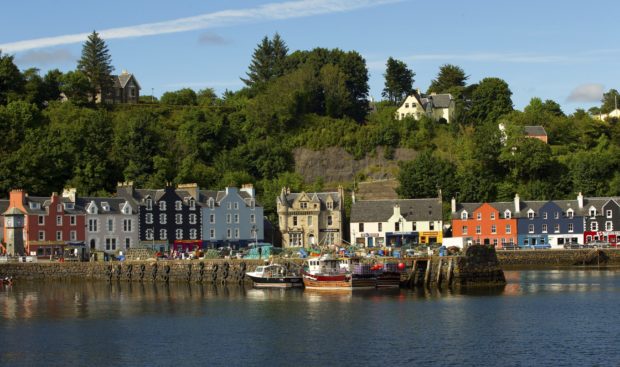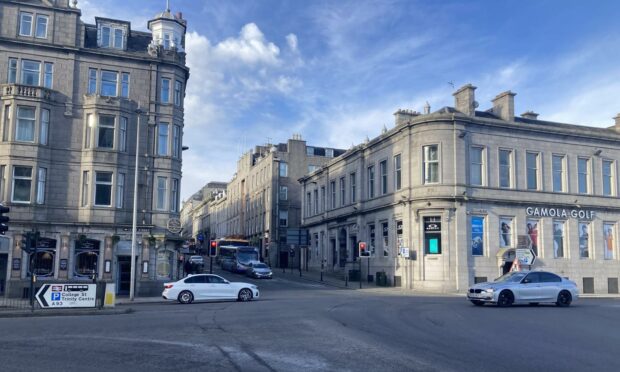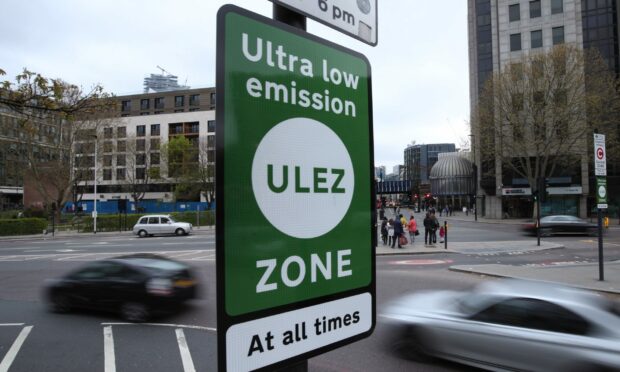Do you like the idea of living in an area where shops, public transport links and all the other vital services you use are just a stone’s throw away?
If so, the SNP’s proposals to make communities across Scotland “20-minute neighbourhoods” may appeal to you.
But in a nation where roads have long been designed around car users and swathes of the country have small populations, the government won’t find it easy to transform how we live.
Are 20-minute neighbourhoods only viable in Scotland’s largest cities and towns, or can they work elsewhere?
What is a 20-minute neighbourhood and how do they work?
The main principle underpinning 20-minute neighbourhoods is ensuring residents in built-up areas can live near public places they visit regularly.
That means families should be able to walk their children to school, do their shopping, visit their GP, and even go for a nice meal without having to travel long distances.
If you think that sounds familiar or even describes how you live right now, that’s because the idea itself isn’t particularly new.
In many ways, 20-minute neighbourhoods hark back to older methods of planning how cities and towns were designed.
Elsewhere, you might have heard of the 15-minute city, which is essentially the same concept with a different tagline.
Supporters say there are health benefits since residents are encouraged to walk and cycle.
They also claim 20-minute neighbourhoods can help local economies since families are able to shop without travelling long distances.
Can this work in rural areas?
All of that might sound great – but how does it work in remote parts of Scotland where public transport links are poor and households rely on cars?
The Scottish Government has admitted many families in rural areas can’t access services within 20 minutes.
For less populated towns the concept has been tweaked to be described as “local living”.
The government may want to get motorists off the road, but veteran town planner Nick Wright said greater car usage is a “fact of life” in rural Scotland.
On whether current plans will work outside urban areas, Mr Wright said: “The jury’s out. They’re saying the right things in policy documents, but the proof will be in the pudding.”
Euan Leitch works for SURF, a community regeneration group which aims to help residents in disadvantaged areas.
He told us: “20-minute neighbourhoods are in some ways easier to apply in cities.
“Transport is key, whether or not it’s through an improved rail network, or buses.”
At a time when councils face real-terms funding cuts and budgets are stretched, creative solutions may be required to boost infrastructure.
Drawing on his own work, Mr Wright told us there are still ways to improve transport links in rural areas even when money is tight.
In Black Isle, north of Inverness, he revealed subsidies for Stagecoach had been diverted to smaller community buses to better serve locals.
Mr Wright told us: “It’s often about how you spend money rather than needing to increase the budget.”
And even if 20-minute neighbourhoods themselves are not entirely viable, even small improvements could be a huge help to locals.
Planning lawyer Neil Collar said: “You’re probably still going to have to travel by car, but let’s at least ensure the distance you have to travel is reduced.
“To some extent you’ve got to work with what you’ve got already, particularly in remote and rural areas.”
Will this work in Aberdeen?
For residents in urban cities like Aberdeen, the concept of being able to get by without depending on a car might not be so alien.
“In Aberdeen and bigger towns, it’s probably easier for people to get their heads around it”, said Mr Wright.
Mr Collar told us: “In Aberdeen, the city’s centred around Union Street, and that’s where you want your public transport to be bringing people.
“The surrounding areas of housing should then have access to services on that 20-minute neighbourhood principle, but the services won’t be as big.”
But while busy city centres often already qualify as 20-minute neighbourhoods, plenty of urban communities with higher levels of deprivation are still cut-off.
Is there a risk this will all just end up worsening inequality with poorer areas getting the short end of the stick?
Mr Wright said: “Investment needs to be focused on the people who are most in need. Otherwise the risk is, inequality will get worse.”
Mr Leitch added: “We need to ensure this is not only successful for the well-off.”
Why have 20-minute neighbourhoods become controversial?
What might sound like a rather harmless policy idea has developed into a source for bizarre conspiracy theories.
Fringe critics warn residents will be prevented from leaving their local areas and claim the concept is being introduced to phase out car usage.
English Tory MP Nick Fletcher even claimed 15-minute cities would “take away personal freedoms” while speaking in Westminster.
The initiative has become closely linked with “low traffic neighbourhoods” aimed at reducing car usage and “low emission zones” which ban older vehicles from busier areas.
But experts say the conspiracy theories surrounding 20-minute neighbourhoods are baseless.
Mr Leitch told us: “Currently I can’t think of a topic that doesn’t have a conspiracy theory related to it.
“The fact this has a conspiracy related to is part of the zeitgeist of the 21st Century.
“There is nothing about this that would apply any form of restriction of movement.”





Conversation